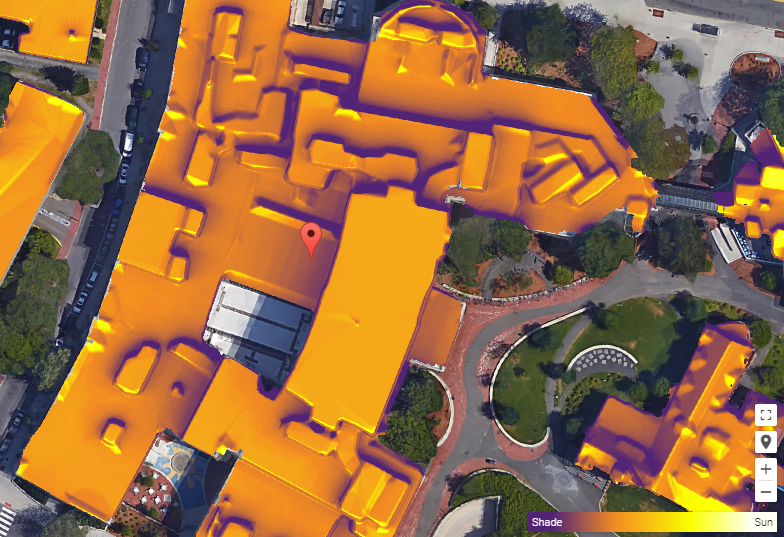Gideon Weissman
Former Policy Analyst, Frontier Group
Solar energy is booming in popularity, and that has a lot to do with its rapidly declining price. Google’s new Sunroof project (for now available in Boston, San Francisco, and Fresno) taps into some advanced technology to give consumers perhaps the easiest way yet to see their opportunity for big savings potential from installing solar panels.
Former Policy Analyst, Frontier Group
Solar energy is booming in popularity, and that has a lot to do with its rapidly declining price. Google’s new Sunroof project (for now available in Boston, San Francisco, and Fresno) taps into some advanced technology to give consumers perhaps the easiest way yet to see their opportunity for big savings potential from installing solar panels.
The Sunroof tool is technologically impressive – and it’s also fun to play around with. The first thing I did was plug in the address of my parents’ mid-19th century house in Cambridge, which has lots of weird roof angles and is surrounded by trees. Not only did the Sunroof analysis show that my parents could save $21,000 in 20 years with solar panels, but the imagery seemed to show a dead-on reading of the roof’s geometry and access to sunlight, which it displays by painting the roof in shining gold. (It didn’t take into account things like my parents’ old slate roof… and I would have been creeped out if it did.) After that, I plugged in the address of my old high school, which I found out has 65,217 square feet for solar panels!

My old high school in Google’s Project Sunroof. ©2015 Google – Map Data ©2015 Google.
This is far from the first tool for estimating the costs and savings from solar panels. PVWatts, by the National Renewable Energy Laboratory, provides a tool for detailed analyses that takes inputs like module type and panel tilt. The website Mapdwell provides rooftop solar potential estimates along with mapping images that rival Sunroof in terms of coolness.
But what’s new and exciting about Sunroof is just how easy and automatic it is. There’s no measuring required, no drawing squares around your roof, and no calculating installation costs or solar incentives. Sunroof does it all for you, instantly provides you with an estimate of 20-year cost savings, and even helps you get in touch with available solar installers. Impressively, Sunroof’s cost analysis includes a breakdown of the savings from state and federal incentives, including the sale of Solar Renewable Energy Credits (SRECs).
Google has promised to expand Sunroof across the country, and maybe even the globe. I’m hoping along the way they can also add a couple more features: Make the data sortable and downloadable so that nerds like me can use it for broad analyses; make more data available to view (like yearly generation and assumptions about weather data); and maybe most importantly, give people an estimate of the positive environmental impact they can have by installing panels. I also hope that when Sunroof expands to states without good solar incentives, it will make it clear to people what important policies they’re missing out on, which could provide some political encouragement for decision-makers.
Solar energy is already reducing reliance on fossil fuels and helping prevent the worst impacts of global warming – so it’s encouraging to see one of the most powerful tech companies in the world put some weight behind it. While we need good policy at all levels of government to reach our full solar potential, innovative tools like Sunroof are an important piece of the puzzle.
Former Policy Analyst, Frontier Group
